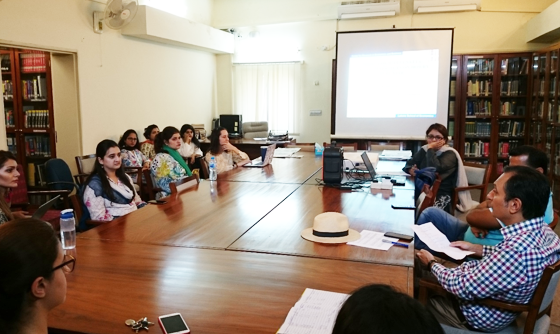 | Department of Economics |
| NEWS & MEDIA |
NEWS
Research Paper Presentations
Komal Shakeel, presented her MPhil research (abstract given below) in the Economics Faculty Departmental Meeting held on 30th August, 2018, at 10:00a.m in TRC-1.

Impact of Cousin Marriages, Watta Satta and Interaction between Cousin Marriage and Watta Satta on Dowry in Punjab
Komal Shakeel
Abstract
Dowry is a common custom widely followed in South Asia and some parts of East Asia also. The demand for dowries is increasing with time and it has become a rigid custom, opposed by sociologists and anthropologists on account of increasing domestic violence and gender discrimination. Dowry expenses in some cases are so large that they have driven parents into bankruptcy and sometimes parents have to borrow at a high interest rate in the case that several daughters are to be married. Consanguineous marriage - a marriage contracted between two close biological relatives- is chosen in order to save dowry cost. By marrying a relative a family can leverage payments at the time of marriage to instead promise future transfers in the form of inheritance. Moreover, exchange marriages - a marriage where daughters from two families are exchanged for each family son - involves mutual exchange of possession, thus dowry is not required as both parties are in equal position. The paper jointly looked at the impact of consanguineous marriage, watta-satta (exchange marriage) and interaction between watta-satta and consanguineous marriage on dowry in rural Punjab using data from Punjab Consanguinity Survey, 2009. However, both watta-satta and consanguineous marriage are prone to selection bias. Thus, instruments are created for these variables. Results show that lower dowry would be given to the woman who are married to their cousins or are engaged into watta-satta marriage or are engaged simultaneously into both cousin and watta-satta marriage. Moreover, we have also used our analysis to test the impact of consanguineous marriage, watta-satta and interaction between watta-satta and consanguineous marriage on domestic violence and woman decision-making.
 People
People